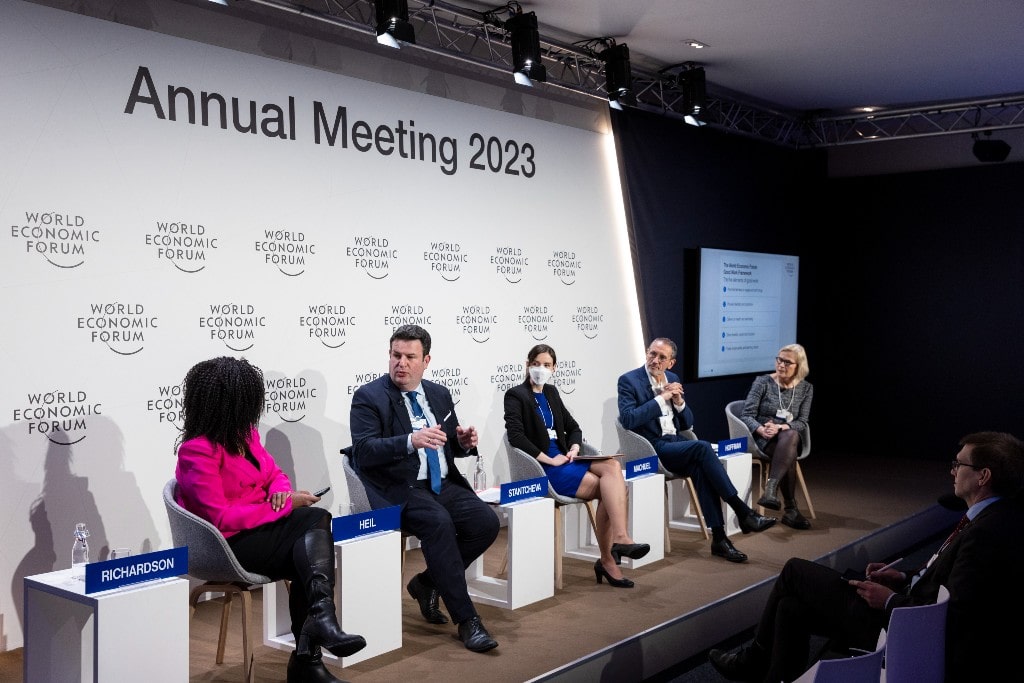In 2023, as companies grapple with talent scarcity, it’s clear the role of chief people officer continues to grow. Our Chief People Office of the Future report from 2022 showed the evolving landscape of managing a company’s greatest asset — its people. The report indicated that chief people officers essentially must perform two roles simultaneously as leaders of change and culture and data scientists.
In fact, 90 percent of Chief People Officers said that people analytics and an understanding of data will be important during the next five years. Results also showed that human skills take precedence for the next 20 years.
In the ever-shifting world of work, it’s more important than ever for leaders to focus on dynamic and agile talent strategies, people architecture, and workforce expectations. That’s the message Katy George, senior partner and chief people officer at McKinsey & Company, had for leaders during our recent episode of Future of Work Conversations.
The conversation took place during the World Economic Forum’s annual meeting, where George sat down with Valérie Beaulieu, Chief Sales & Marketing Officer at the Adecco Group, to talk about the ever-shifting future of work and the pressing talent shortage.
Three themes are top of mind for CEOs and CHROs
For many leaders today, talent scarcity remains one of the key challenges in the future of work. George expands on this idea, explaining how the fast-evolving environment centers around three big themes.
“One is how do we make sure that we have the right support and expertise to counsel our leaders with a holistic approach to talent strategy?” George said.
This leads to questions about talent acquisition: where should we recruit and where will we recruit senior people versus people right out of school?
“How do we think about our learning and development programs to develop skills? How do we think about our people architecture?” George said. “Workforce development is increasingly important. All of that strategy needs to come together in a way that is not just business responsive, but frankly business leading because we need to be looking ahead.”
“We do a lot of work thinking about how do you put the right groups of people together so we have all the right expertise?” George said. “Whether that's global talent sources or local and then how do we help them work with the rituals that allow them to be very successful? And how do we measure that along the way to intervene when we need to?”
Providing individual counsel to create an agile talent development system encompasses the third item.
“We're increasingly orienting our whole talent architecture to self-authored skill journeys which means we need to help people understand how to access the learning and development and apprenticeship opportunities that they need and help them think through how they meet their own professional goals using McKinsey as a platform,” said George.
Big data transforms talent
McKinsey has started to recruit more tech workers as they develop tech talent, George said. But these efforts mean the organization has to ensure everyone is a technologist – or, can understand how to use technology in their everyday life. According to Gartner research, 41 percent of employees can be described as business technologists (though the number varies by industries). Our own research found that only 77% of workers think they have skills gaps, technology-based or otherwise; likewise, 62% of managers believe they have tech skills gaps.
Regardless of industry, though, it’s critical for all workers to understand how to work with data and tech – and be able to analyze it.
As Jan Gupta, the President of Akkodis, says: all industries will be smart industries in the future. That’s why tech – and understanding how to work with it -- is so critical. At McKinsey, It all comes down to ensuring the workforce can use technology in their day to day lives. George calls it a “teamwork of science,” where the organization ensures all workers make data-driven decisions.
“For example, we have 4,000 teams around the world,” said George. “We are increasingly able to say, ‘What choices are they making about hybrid? Who’s co-locating together with their teams? Who's co-locating with their clients? Are they doing it at the beginning of a project, in the middle, at the end? Are they doing it in a uniform way? Are they making different tailored choices? How are they using technology?’”
Forget about free lunch: flexibility, balance and purpose drive retention
In our recent research, The Global Workforce of the Future Report, the majority of workers indicated they planned to stay with their current employer the next 12 months. That’s due to happiness, job stability, a good work-life balance, flexibility and because they like their colleagues.
While compensation is important, it’s not the absolute driver of retention and neither are perks like yoga classes, said George, underscoring our own research.
“What we're seeing in our research is that three things matter to people. One is flexibility and work-life balance. I'll put those together. Secondly is a sense of purpose. People no longer feel they need to identify with kind of one institution's purpose,” she said. “They may have an individual purpose whether it's well articulated or not, but they know if they feel like they're doing something that's valuable that fits with their values.”
The third thing is essential regardless of the worker’s level: skill development. It’s absolutely critical in today’s day and age, the leader said.
“That’s the other piece having really great skill architecture—being able to really help colleagues in their pathway to skill development in a way that is very dynamic and flexible which meets their needs, but also ours,” George said.
Upskilling transforms into a self-authorship journey so workers write their own leadership growth plan. “What kind of professional are you trying to be? What impact in the world and in your client base are you trying to have? What are the skills you've been working on? And what are the next skills?”
The Great Resignation persists
That self-propelled leadership growth plan, when paired with flexibility and purpose, may fuel autonomy which, in turn, can fuel turnover. George notes it’s important to learn from the pandemic to increase a long-term value proposition to a larger pool of talent.
“I think we learned a lot that we need to give people more flexibility in how they build their careers. We’ve seen a permanent shift in workforce expectations of wanting a closer connection to purpose and to individualized skill-building career development,” said George.
Workers recognize that they can quit and find other work and that they can use the gig economy to build interesting parts of their careers. Resigning is on their radar. According to McKinsey research from 2021, 40 percent of employees are at least somewhat likely to quit in the next three to six months and 18 percent of respondents said intentions range from likely to almost certain.
Diversity programs are key to supporting workers, especially women
McKinsey research also showed that two million women, for instance in America, considered leaving the workforce altogether or stepping back from their careers during the pandemic.
This speaks to lack of support, notes George.
“As long as women have a disproportionate share of family responsibilities, we will continue to see a real challenge,” she said. “We have to equip all of our colleagues, all of our workforce, with flexibility that they need to actually deliver against all parts of their lives.”
George believes diversity programs will need to continue to be a priority in evaluating pipelines and asking if enough people have been developed to advance to the next level. “What we need to do at an underlying level is also ensure that we are creating the culture and the skill architecture,” George said. “All of this helps if we move away from how many years of experience do you have? What degree do you have? To skills. All of this helps a much wider range of people, including women and other people who are diverse, to be successful.”
Key takeaways
When companies provide flexibility and work-life balance, a sense of purpose and skill development, they lean into retention. Flexible schedules help women re-enter the workforce and ultimately inclusivity helps all workers.
By supporting workers in a dynamic manner in their skills development and self-authorship, organizations allow career paths to breathe and grow. This culture and priority of inclusion and diversity to support workers transcends as organizations build pipelines and develop workers so they can advance to the next level.
Tune in below to listen to this Future of Work Conversation in podcast form.



